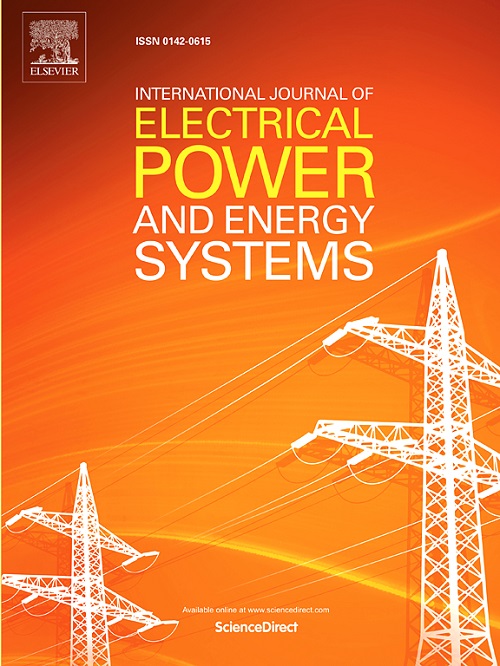评估市场环境下与风能相关的储能投资方案
IF 5
2区 工程技术
Q1 ENGINEERING, ELECTRICAL & ELECTRONIC
International Journal of Electrical Power & Energy Systems
Pub Date : 2024-10-04
DOI:10.1016/j.ijepes.2024.110265
引用次数: 0
摘要
随着风力发电在能源领域所占份额的不断增加,许多国家开始削减对风力发电的支持政策,转向以市场为导向的计划,这对风力发电场的盈利能力提出了挑战。储能为提高风电场的盈利能力提供了灵活的解决方案。本研究探讨了不同的风能相关储能投资模式,包括 1)直接所有权模式;2)合作模式;3)市场化环境下的竞争模式。对于直接所有权模式,提出了一个双层级的单领导-单追随者斯塔克尔伯格博弈模型,其中风电场在上层级战略性地投资和运营储能设施以实现利润最大化,而下层级问题则代表了系统运营商的市场清算过程。针对合作模式提出了一个合作博弈框架,即风电场和储能投资者就利润分配规则(即 Shapley 值或 Nucleolus)达成一致,以联盟形式合作投资和竞标。竞争模式被解释为多领导-单跟随者的斯塔克尔伯格博弈,描述了独立投资者在与风电场竞争中投资和运营储能设施的情况。在 6 总线和 IEEE 30 总线测试系统上进行的案例研究表明,风电场直接投资的储能设施是其利润最大化的最佳选择,最多可增加 8.7%。而合作方式则是次优选择,最多可增加 3.1%,分散了与储能投资相关的成本和风险。相比之下,竞争模式会降低风电场的盈利能力,利润最多可减少 30.6%。本文章由计算机程序翻译,如有差异,请以英文原文为准。
Assessment of wind-related storage investment options in a market-based environment
With the increasing share of wind power in the energy sector, many countries start to cut back supporting policies for wind power and shift towards market-oriented schemes, challenging the profitability of wind farms. Energy storage offers a flexible solution to enhance their profitability. This work explores different wind-related storage investment modes, including 1) direct ownership, 2) cooperative, and 3) competitive modes in a market-based environment. For the direct ownership mode, a bilevel single-leader-single–follower Stackelberg game model is proposed, where wind farms invest in and operate storage facilities strategically to maximize their profits in the upper level, while the lower-level problem represents the system operator’ s market-clearing process. A cooperative game framework is presented for the cooperative mode, that wind farms and storage investors agree on a profit allocation rule, i.e., Shapley value or Nucleolus to collaborate in investing and bidding as a coalition. The competitive mode is interpreted as a multi-leader-single-follower Stackelberg game, describing an independent investor investing in and operating storage facilities in competition with wind farms. Case studies conducted on a 6-bus and the IEEE 30-bus test systems demonstrate that storage facilities directly invested in by wind farms are the best option for maximizing their profits, resulting in up to an 8.7% increase. The cooperative option provides a suboptimal increase of up to 3.1%, diversifying the costs and risks associated with storage investments. In contrast, the competitive mode can diminish wind farms’ profitability, with up to a 30.6% decrease in profits.
求助全文
通过发布文献求助,成功后即可免费获取论文全文。
去求助
来源期刊
CiteScore
12.10
自引率
17.30%
发文量
1022
审稿时长
51 days
期刊介绍:
The journal covers theoretical developments in electrical power and energy systems and their applications. The coverage embraces: generation and network planning; reliability; long and short term operation; expert systems; neural networks; object oriented systems; system control centres; database and information systems; stock and parameter estimation; system security and adequacy; network theory, modelling and computation; small and large system dynamics; dynamic model identification; on-line control including load and switching control; protection; distribution systems; energy economics; impact of non-conventional systems; and man-machine interfaces.
As well as original research papers, the journal publishes short contributions, book reviews and conference reports. All papers are peer-reviewed by at least two referees.

 求助内容:
求助内容: 应助结果提醒方式:
应助结果提醒方式:


